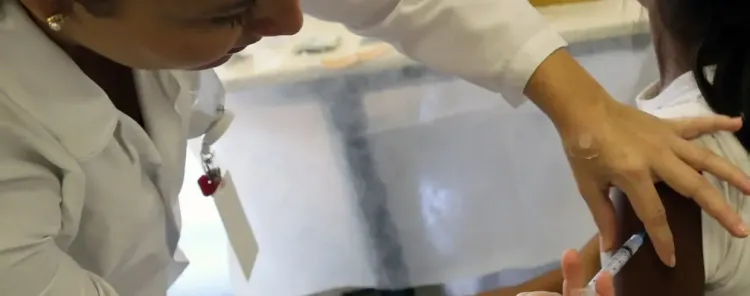Could Preventable Cervical Cancer Really Claim a Woman's Life Every Two Minutes?

Synopsis
Key Takeaways
- Cervical cancer is preventable and treatable.
- Access to HPV vaccinations and screenings is crucial.
- 90% of cervical cancer deaths occur in low-income countries.
- Women living with HIV are at a higher risk.
- Collaboration is key to achieving elimination goals.
New Delhi, Nov 17 (NationPress) A woman succumbs to cervical cancer every two minutes globally—a disease that is both treatable and preventable, according to a statement from the UN on the inaugural World Cervical Cancer Elimination Day. This significant day, observed on November 17, was established by the Seventy-eighth World Health Assembly (WHA78.8) to promote awareness about the disease and to enhance access to HPV vaccination, effective screening, and treatment services.
“Every two minutes, a woman loses her life to cervical cancer. Access to screening, vaccination, and treatment is essential for eradicating this preventable disease,” the UN stated in a message shared on the social media platform X.
“Cervical cancer is preventable. Beyond vaccination, regular screening and the treatment of pre-cancerous lesions contribute to protection against this cancer,” emphasized the World Health Organization (WHO).
As per WHO statistics, cervical cancer ranks as the fourth most prevalent cancer among women globally, with approximately 660,000 new diagnoses and around 350,000 fatalities reported in 2022.
Remarkably, 90% of these deaths occur in the least affluent countries, where access to vaccination, screening, and treatment is limited.
Cervical cancer arises from persistent infection with the human papillomavirus (HPV). Women living with HIV face a six-fold increased risk of developing cervical cancer compared to their HIV-negative counterparts.
However, cervical cancer can be effectively treated if detected early and managed without delay.
Prophylactic HPV vaccination, along with screening and treatment of pre-cancerous lesions, represents efficient and cost-effective strategies to avert cervical cancer.
This year’s theme, “Act Now: Eliminate Cervical Cancer,” advocates for decisive and collective action to build upon existing achievements and accelerate progress toward the 90-70-90 targets set for 2030.
The goal is to vaccinate 90% of girls against HPV by age 15; ensure 70% of women undergo high-performance screening by ages 35 and 45; and provide treatment for 90% of women diagnosed with cervical disease.
Elimination is feasible if we act collaboratively now—ensuring every girl is safeguarded through HPV vaccination and every woman has access to prevention, screening, and care,” stated the WHO.









